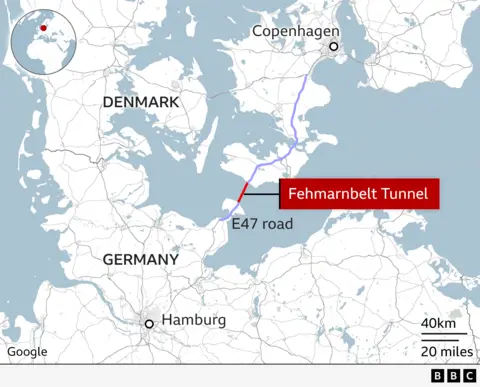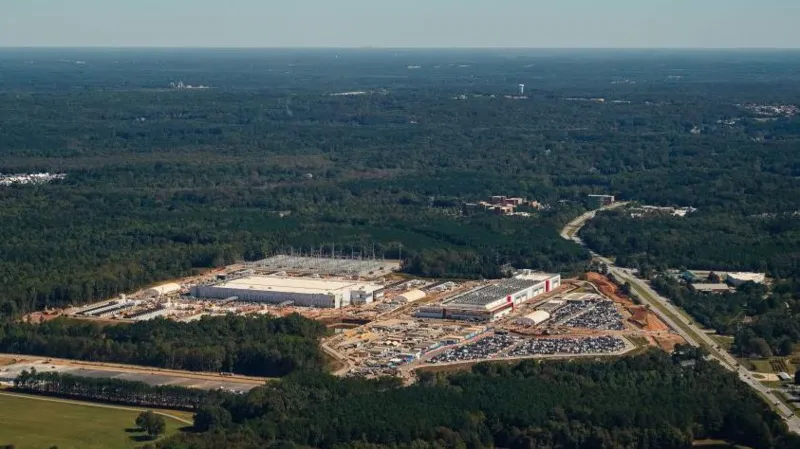Fehmarnbelt Tunnel: A Record-Breaking Engineering Marvel Connecting Denmark and Germany
The construction of the Fehmarnbelt tunnel – a monumental engineering project connecting Denmark and Germany – is rapidly nearing completion, poised to revolutionize travel and trade across Northern Europe. This ambitious undertaking, dubbed ‘Femern,’ promises to slash journey times dramatically while simultaneously bolstering regional connectivity and promoting sustainable transport alternatives.
The tunnel, running for an impressive 18 kilometers (approximately 11 miles) beneath the Baltic Sea, will be the world’s longest pre-fabricated road and rail tunnel. Its design is a truly innovative feat of engineering: instead of excavating through bedrock as with traditional bore tunnels (which proved unsuitable due to the soft seabed conditions), the project utilizes an ‘immersed tunnel’ method. This involves constructing 90 massive, reinforced concrete elements – each measuring around 217 meters (712 feet) long and 42 meters wide – on land. These elements are then carefully towed out into position and slowly lowered onto a prepared trench using underwater cameras and GPS-guided precision, aligning them with millimeter accuracy.
The construction site at Lolland Island in Denmark spans over 500 hectares (1,235 acres), encompassing a significant harbor facility for element manufacturing and assembly, as well as a state-of-the-art factory producing these crucial components – referred to as ‘elements.’ Each individual element requires immense effort; they are cast from reinforced steel and concrete, weighing in excess of 73,000 tonnes. The process involves securing the elements with buoyancy tanks, allowing them to be towed into place using tugboats, a remarkably complex maneuver considering their size. The final positioning relies on a ‘pin and catch’ system – a sophisticated mechanical gripping mechanism – ensuring precise alignment during immersion.
The project represents a substantial investment of approximately €7.4 billion (approximately $8.1 billion / £6.3 billion), primarily funded by Denmark, with an additional €1.3 billion coming from the European Commission. It is one of the largest infrastructure projects in the region, strategically aligning with EU goals to strengthen continental transport links and reduce reliance on air travel. Upon completion, the journey between Rødbyhavn (Denmark) and Puttgarten (Germany) will be reduced to just 10 minutes by car or seven minutes by train – a dramatic improvement over the current 45-minute ferry crossing. The new rail route is expected to halve travel times between Copenhagen and Hamburg from five hours to a mere 2.5 hours, fostering economic growth and enhancing connectivity throughout Scandinavia and Central Europe.
The decision to opt for an immersed tunnel was driven by practicality and cost-effectiveness. The Baltic seabed’s composition – primarily clay and chalk – prevented the use of traditional bore tunneling methods. Per Goltermann, a professor at the Technical University of Denmark, highlighted this challenge, stating that “they looked at it and said, ‘Okay, what is the cheapest? The tunnel. What is the safest? The tunnel.’”
The project wasn’t without initial opposition. Environmental groups like Nabu raised concerns about potential impacts on sensitive marine habitats, particularly for harbor porpoises and larval fish. However, a legal challenge was dismissed in 2020, paving the way for construction to proceed. Femern has implemented numerous mitigation measures, including the creation of a 300-hectare wetland nature reserve near the construction site, incorporating dredged sand and rock.
When operational in 2029, the Fehmarnbelt tunnel anticipates accommodating over 100 trains and 12,000 cars daily. Revenue generated from toll fees is projected to fully repay the state-backed loans financing the project within approximately four decades. Beyond economic benefits, the tunnel is expected to stimulate job creation and boost tourism in Lolland, a historically economically challenged region of Denmark.












Post Comment